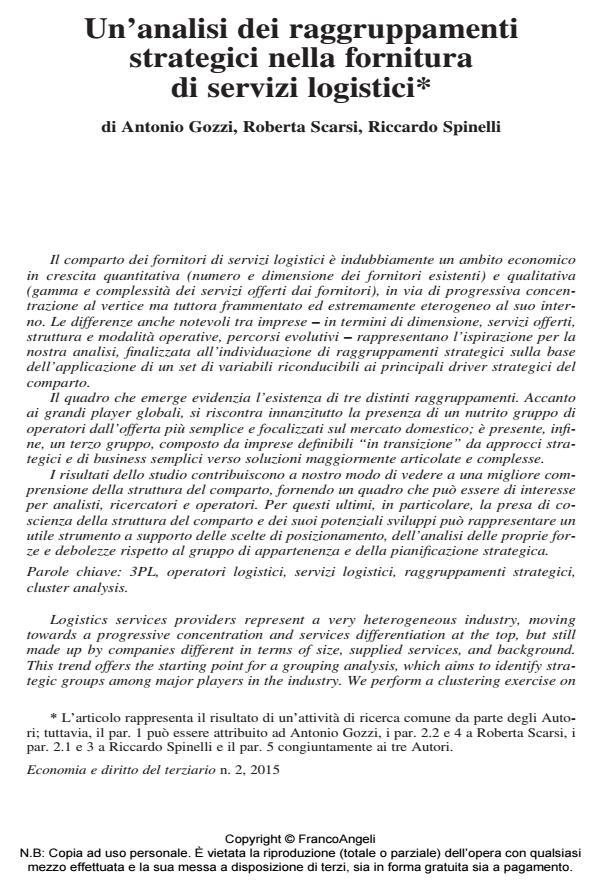Un’analisi dei raggruppamenti strategici nella fornitura di servizi logistici
Journal title ECONOMIA E DIRITTO DEL TERZIARIO
Author/s Antonio Gozzi, Roberta Scarsi, Riccardo Spinelli
Publishing Year 2015 Issue 2015/2
Language Italian Pages 27 P. 231-257 File size 120 KB
DOI 10.3280/ED2015-002001
DOI is like a bar code for intellectual property: to have more infomation
click here
Below, you can see the article first page
If you want to buy this article in PDF format, you can do it, following the instructions to buy download credits

FrancoAngeli is member of Publishers International Linking Association, Inc (PILA), a not-for-profit association which run the CrossRef service enabling links to and from online scholarly content.
Logistics services providers represent a very heterogeneous industry, moving towards a progressive concentration and services differentiation at the top, but still made up by companies different in terms of size, supplied services, and background. This trend offers the starting point for a grouping analysis, which aims to identify strategic groups among major players in the industry. We perform a clustering exercise on a sample including Top-199 providers, using a set of clustering variables which refer to the main strategic drivers for this industry. Three strategic groups emerge from the analysis. The first one include major global players; the second one encompasses less advanced local providers; the third one embraces a large number of firms which are experiencing a transition from simple to more complex and internationally oriented business models. The results of the analysis may contribute to a better understanding of the logistics services providers industry structure, by providing a novel strategic groups analysis with potential benefits for analysts, researchers, and executives. Reasoning on the market structure and its likely development, in particular, can help companies’ managers in defining their positioning, investigating the specific strengths and weaknesses according to the group features, and planning the successive strategies and moves.
Keywords: Third-party logistics, logistics service providers, strategic groups, cluster analysis
Antonio Gozzi, Roberta Scarsi, Riccardo Spinelli, Un’analisi dei raggruppamenti strategici nella fornitura di servizi logistici in "ECONOMIA E DIRITTO DEL TERZIARIO " 2/2015, pp 231-257, DOI: 10.3280/ED2015-002001